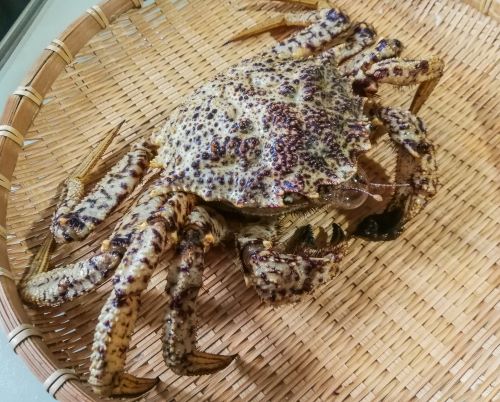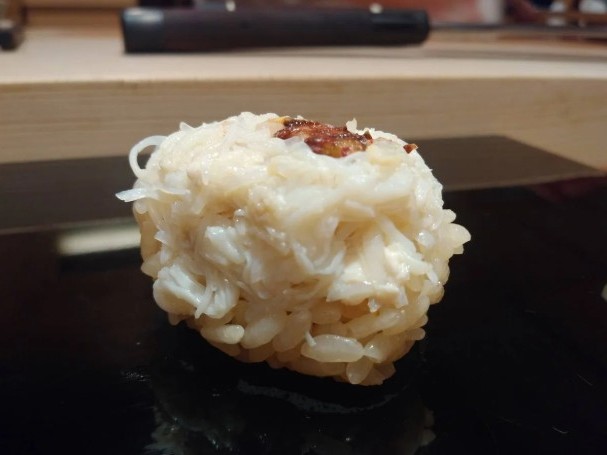
The appearance of Helmet crab (Kurigani)
Common name: Helmet crab
Japanese name: Kurigani (栗蟹、桜蟹)
French common name: Crabe casqué
Russian common name: Краб волосатый пятиугольный
Scientific name: Telmessus cheiragonus (Tilesius, 1812)

The appearance of Helmet crab (Kurigani) nigiri sushi
Nigiri sushi detail: Helmet crab (Kurigani) Nigiri sushi
Characteristics:
Helmet crab (Kurigani) is distributed along the eastern coast of Hokkaido, the Sea of Okhotsk, and the Bering Sea. The difference between the two species is their distribution areas. The Kurigani is found only in Hokkaido, while the Togekurigani is distributed from the Sanriku region to Aomori Prefecture. The Kurigani live on sandy bottoms from the intertidal zone to a depth of 30 meters. The carapace width is 11 cm and carapace length is about 9 cm. The carapace is pointed at the front and resembles a chestnut in shape. It is one size smaller than Kegani. It is in season from March to May.
Kurigani are easy to eat because of their soft shells, and their meat is sweet and flavorful. Crab miso is also packed tightly like Kegani and has a super rich flavor. Kegani females are not allowed to be caught due to the “prohibition on fishing” to protect the resource. However, since female Kurigani are allowed to be caught, depending on the time of year, they can be found with dark orange eggs inside the shell. Uchiko (Eggs inside the shell) is an exquisite delicacy known only to those in the know.
In recent years, stocks of Horsehair crab (Kegani), King crab (Tarabagani), Snow crab (Zuwaigani), Brown king crab (Hanasakigani), and other crabs have all been depleted. Prices are gradually rising, but despite the small catch, they are very reasonable compared to other crabs.
Share this article